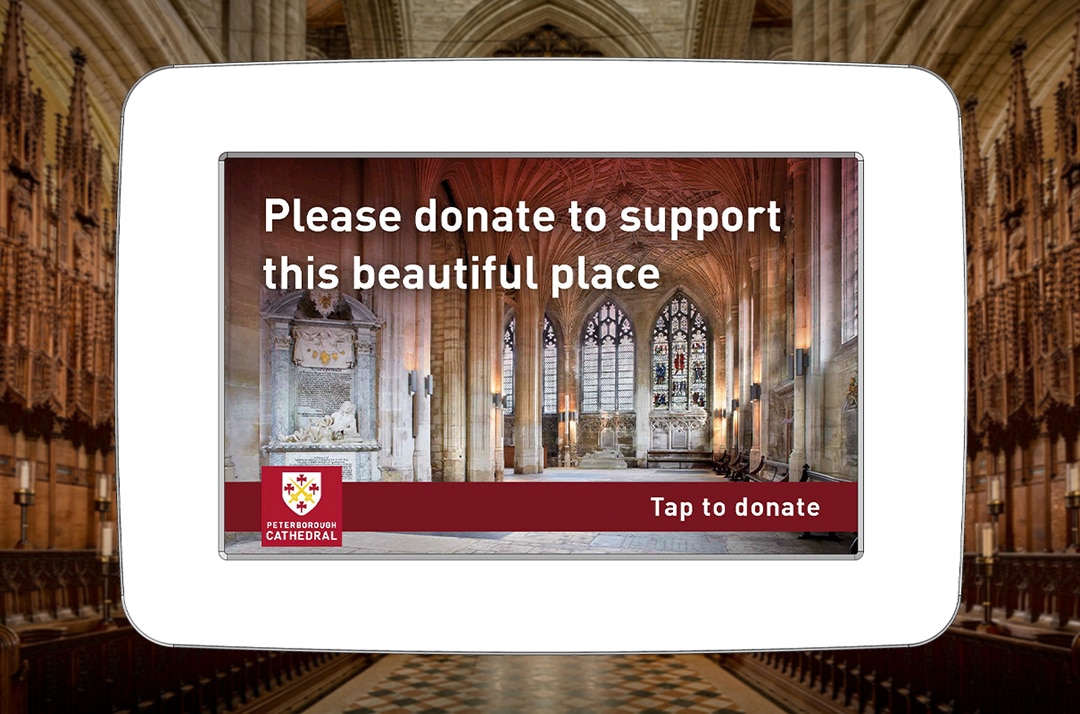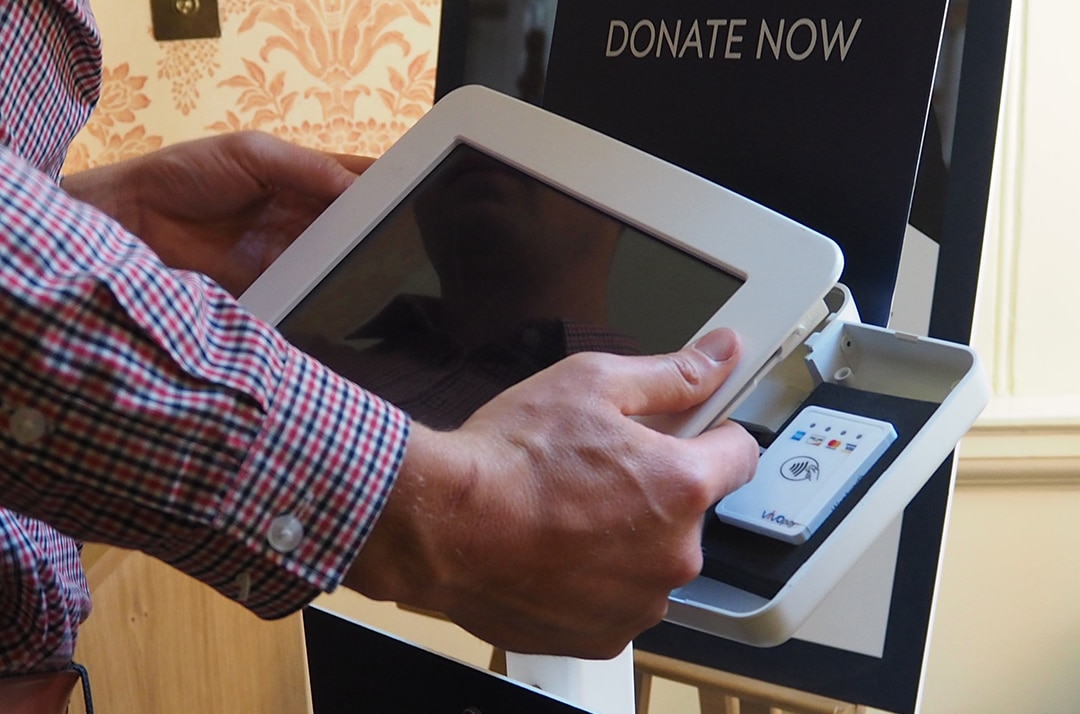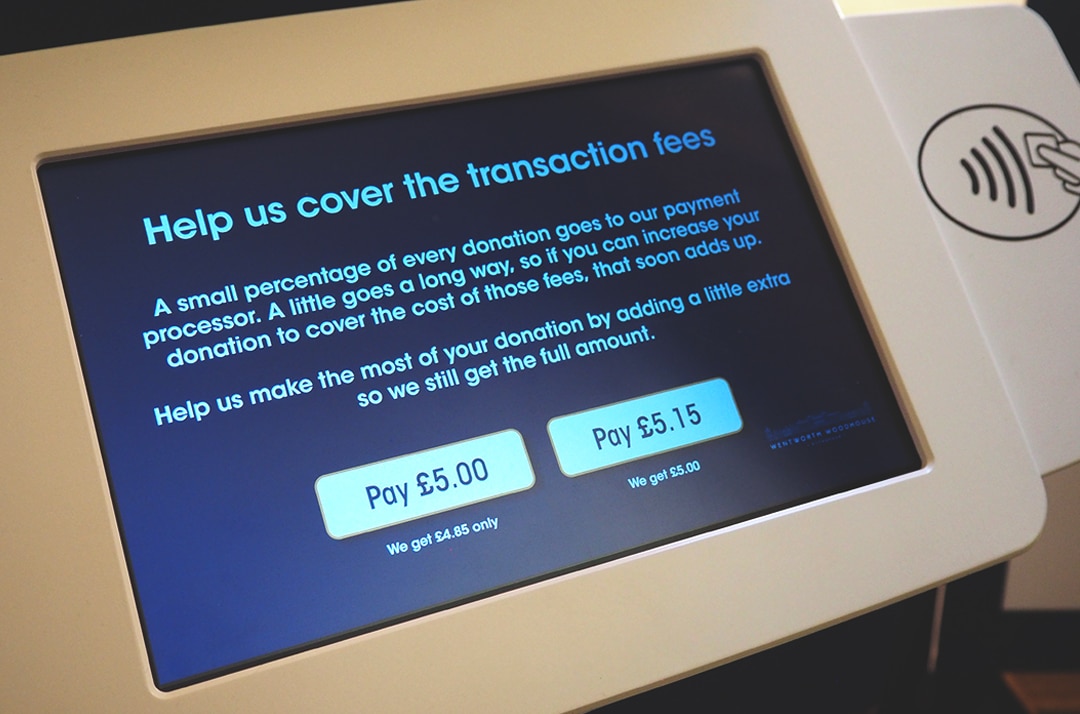
Cathedrals are the latest sites having to adapt to stay open
Cathedrals are a key part of our UK heritage, with stunning architecture, historical treasures and community activities all available to the public.
So why are they seeing a decline in both visitors and funding?
"They attract millions of visitors every year and provide jobs and an economic boost to their regions, hosting cultural and civic gatherings as well as worship. Many also provide practical help to people through social action projects.”
– Reverend Chris Dalliston, Peterborough Today
It costs millions of pounds to run the cathedrals annually, however, in recent years we’ve seen cathedrals, like many charities, come up against challenges including:
- The rise in cost of living
- Increased expenses
- Decrease in funding
- Decrease in footfall
This has resulted in 10 out of 42 UK cathedrals turning to paid entry as a way to boost funds. Much to the disappointment of the public. With some critics stating that they’re turning into ‘cash cows’.
‘Paid entry should be a last resort’
Peterborough Cathedral, in particular, have been in the news recently promoting their urgent appeal. A deficit in funds meant they were facing difficult decisions around how they operate in the future.
Paid entry, along with reduced opening hours, were considered as solutions to their funding crisis. But the Reverend assured the public that would be a last resort, urging the community to support the short-term appeal and continue to visit the historic building when possible.
By the end of March, they had reached their goal of £300,000 which meant that the cathedral could keep their doors open 7 days a week, without charging a fee.
But this appeal is a short-term fix for a long-term problem:
"We are in no way complacent. This is only the first step in building a long-term sustainable future for the cathedral. We continue to operate on fine margins in a challenging financial environment, and over the coming year we shall need to continue to work hard to strengthen our network of supporters and develop additional sources of revenue to ensure we remain a vibrant community, serving our city, our diocese, and the wider region."
– Reverend Chris Dalliston, Peterborough Matters
With 15% of their income coming from Church of England grants, that leaves the rest up in the air.
Peterborough, like all cathedrals, will have to adapt and diversify their income streams to survive. That means introducing a range of accessible collection methods, putting on ticketed events, encouraging local groups to rent out the space.
Paid entry vs free entry
GWD have supported Peterborough Cathedral with our Donation Stations since 2021 and we were happy to see them used as an extension of the recent campaign, with donors giving to not only the crisis appeal but other causes too. Proving that with the right motivation, the public will support your cause if they know and care about it.
The question is: how do you raise awareness if people aren’t visiting your site in the first place?
The crisis appeal worked because of its strong message – ‘if we do not raise these funds, this local treasure will have to close’. But how can other cathedrals achieve this type of support without launching an urgent appeal?
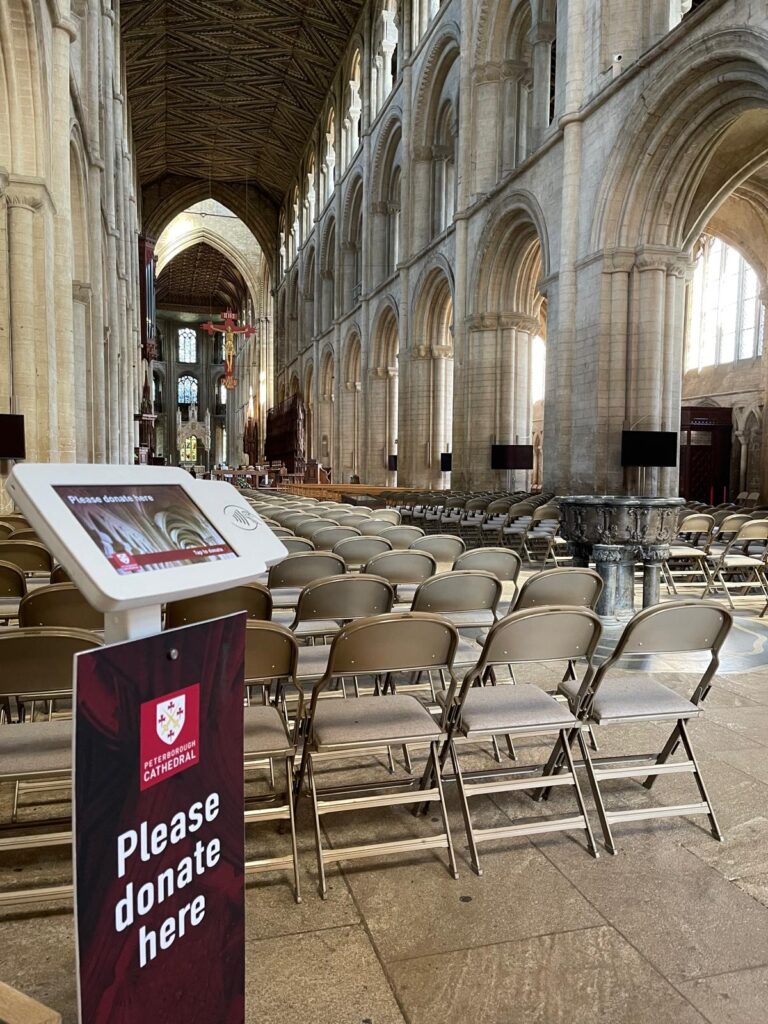
Peterborough Cathedral
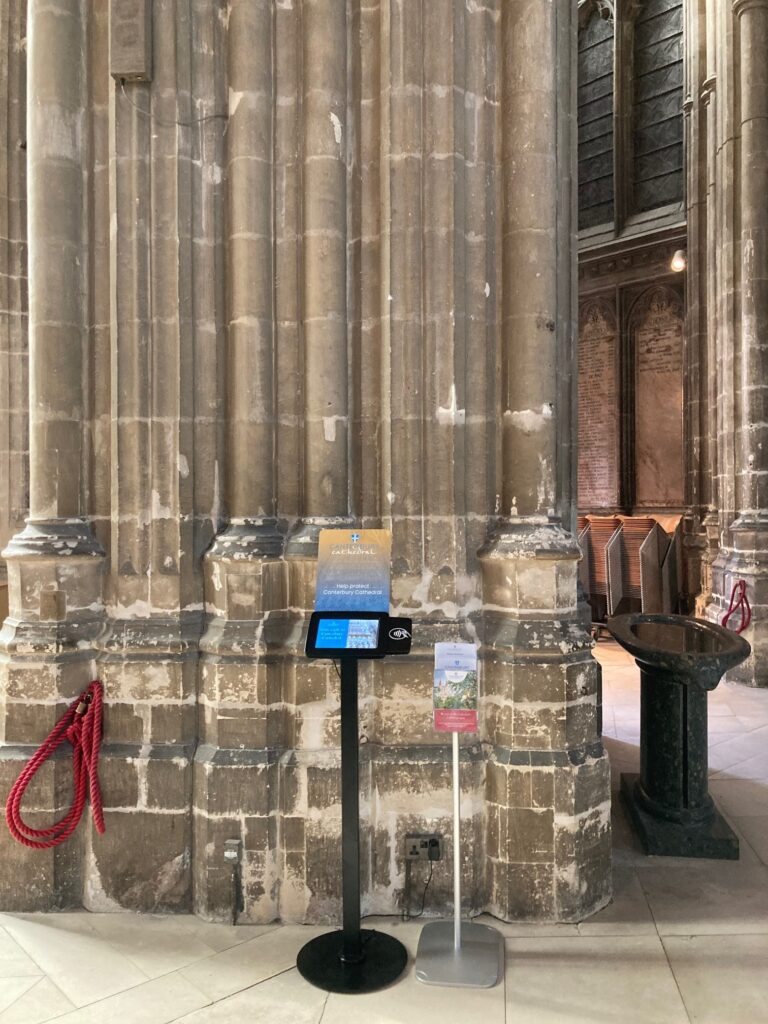
Canterbury Cathedral
We have found with these types of historical buildings especially those in areas of high footfall, that individual donations from tourists contribute to a large proportion of the monthly income. These one-off visitors choose to give in exchange for a pleasant and memorable experience, much like the visitors of a museum would.
That’s why moving to a paid entry model can sometimes detract tourists from entering. Not to mention, local residents may feel this is yet another barrier preventing their regular use of the building.
Despite this risk, some cathedrals have already made the switch. Canterbury cathedral, another of our customers, charge £17 entry fees but this allows someone access for a whole year, promoting future visits.
Durham Cathedral, who we also work with, have opted for a middle ground approach – a suggested donation of £5. The issue here is that the income is still not guaranteed, which makes budgeting difficult.
No matter your approach, use the tools available to maximise income
We can’t say what the right strategy is for keeping cathedrals open. Like with any charitable organisation, it’s about knowing your supporter base and what motivates them to keep engaging with your cause. Keep doing what you’re successful at and learn from the campaigns and events that are less successful.
What matters is getting people through your doors, getting people to care about local heritage and giving visitors the means to donate easily.
The one thing that links Peterborough, Canterbury and Durham Cathedral is their willingness to adapt and bring their organisations into the future. They all use a range of traditional and modern collection methods, including our on-site Donation Stations, that allow people of all demographics to give at their own discretion with just a tap of their card.
The devices see consistent income, showcasing just how impactful adding technology to your fundraising arsenal can be.
Entering these beautiful buildings often leads us to look at the past, but we mustn’t forget to also look to the future.
Who are GWD?
We help socially-minded organisations transition to digital systems, building stronger relationships through impactful products and services.
Our experience goes back two decades, with a foundation building and providing critical digital services and products for the financial services and retail industries.
With a long-proven ability to handle challenging projects and a team of trusted experts, we work hard to solve problems and deliver change that helps others.
More from the Blog
 Back
Back to top

